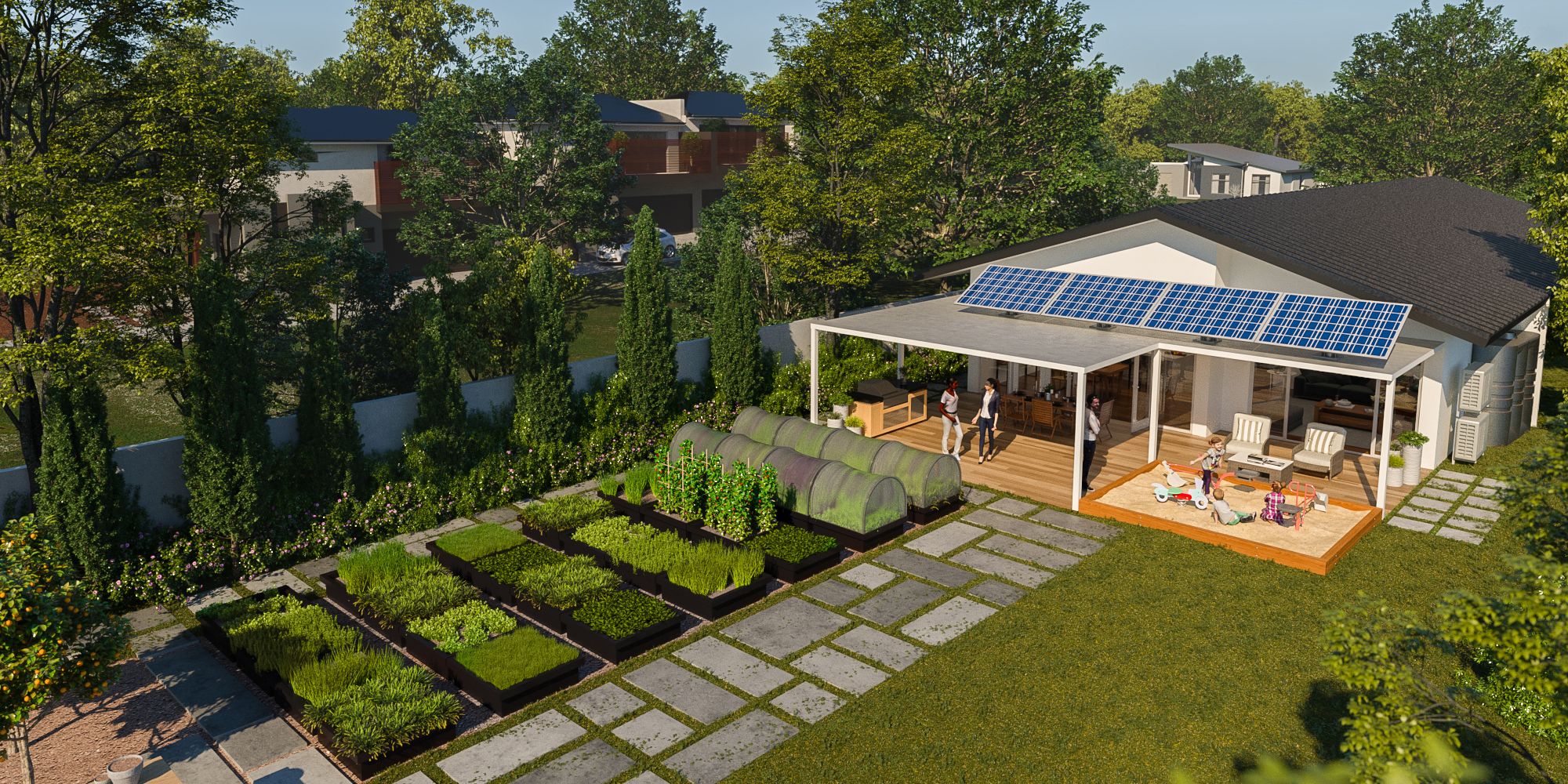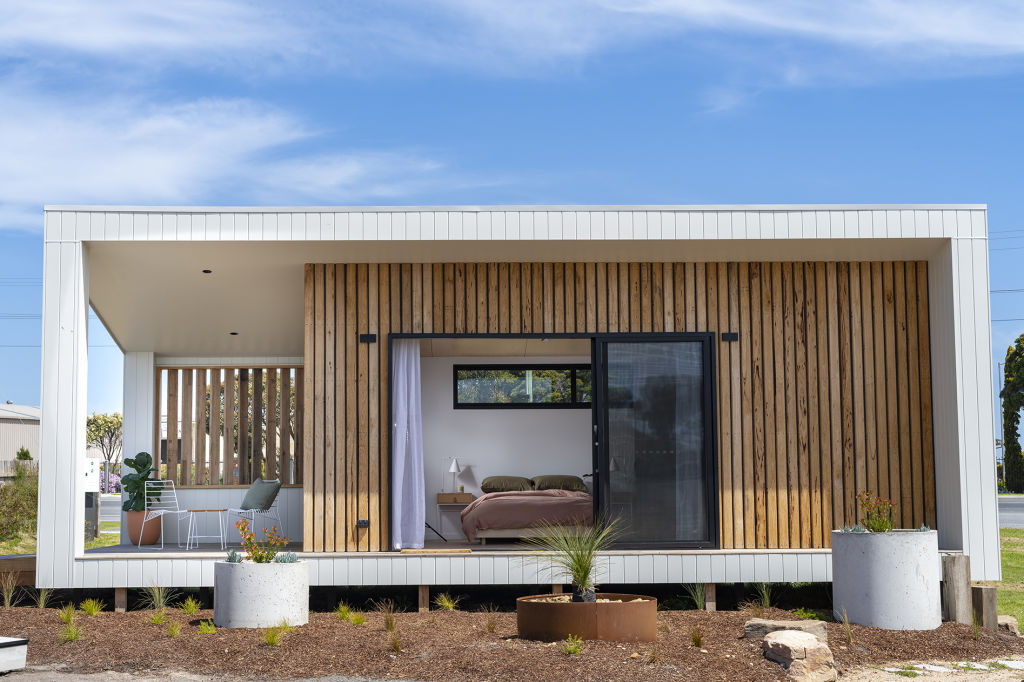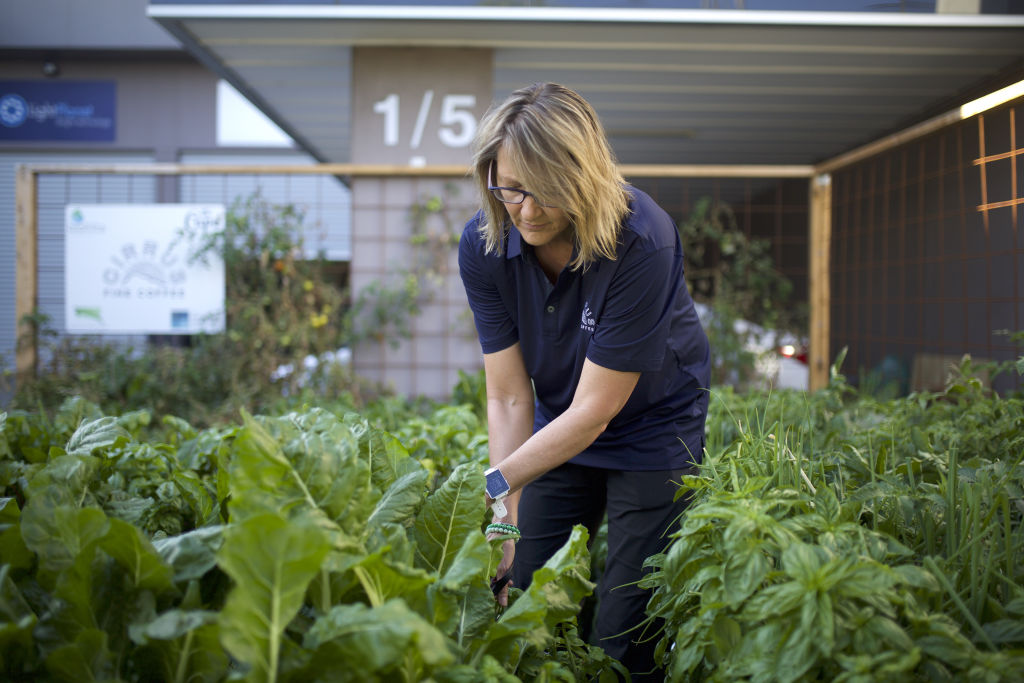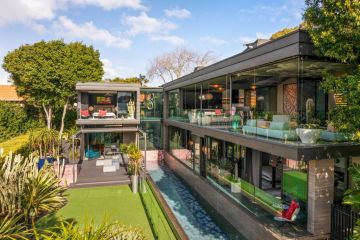The house of the future: Super-sustainable with room to grow your food

The phrase “house of the future” may, at first, provoke images of cartoon family The Jetsons with sky-high homes, flying cars and robot servants.
But according to the experts, the reality is much more sustainable and green. And it’s already here.
One display at the upcoming Melbourne International Flower and Garden Show will feature a range of sustainable builders’ ideas and products linked to the house and garden of the future.
Future homes are set to be highly sustainable, have minimal impact on the land and produce enough fresh food to feed several adults over a year, according to participant Brendan Condon.
Mr Condon is director of three sustainability companies including gardening outfit Biofilta, and part of an award-winning deep-green development The Cape at Cape Patterson in South Gippsland.

“We’re showing people can harness design and breakthrough technology that is already being used on houses around the world,” Mr Condon said.
He said sustainability was a must for the future of big cities like Melbourne and Sydney, especially when it comes to living a healthy and comfortable life.
“Suburbia now needs to become the new nature,” he said.
“Cities have huge opportunities to combine rainwater or rooftop rainwater runoff, waste stream organics like composted food waste and surplus city spaces with clever urban farming systems to grow huge amounts of fresh produce.”
Mr Condon said a new gardening system would be launched at the show to demonstrate to people that they could grow food anywhere.
Biofilta recently partnered with a local coffee company to set up pop-up farms in two car spaces in Rocklea Drive, Port Melbourne.
The aim is to grow over 300 kilograms of fresh food in over a year using used coffee grounds and chaff. They have already produced 180 kilograms of food in four months.

Mr Condon said there were opportunities to turn urban areas and high-rise blocks into environments for not only food production but also other types of biodiversity.
That included setting up areas of wetlands which would encourage frogs and insects to find a home in urban areas. More plants offering shading would also help with the urban heat island effect.
As well as food production, the house and garden of the future will also use solar energy and solar batteries to produce more power than they need. This could power electric cars – even if not actual flying cars promised by The Jetsons.
Director of modular home group Ecoliv Building Ashley Beaumont agreed, saying sustainable home design was now at a point where heating and cooling appliances were minimally used.
Passive solar design – using the sun to heat and cool homes – meant power bills would be massively reduced.
Mr Condon said this could be by as much as $2500 every year where efficient, all-electric appliances were used.
“Climate-adapted, resilient, comfortable homes powered by renewable energy with super-low energy bills, coupled with productive urban farming, are definitely the future,” Mr Condon said.
- The Melbourne International Flower and Garden Show is on March 27-31 at the Royal Exhibition Building and Carlton Gardens.
We recommend
We thought you might like
States
Capital Cities
Capital Cities - Rentals
Popular Areas
Allhomes
More







